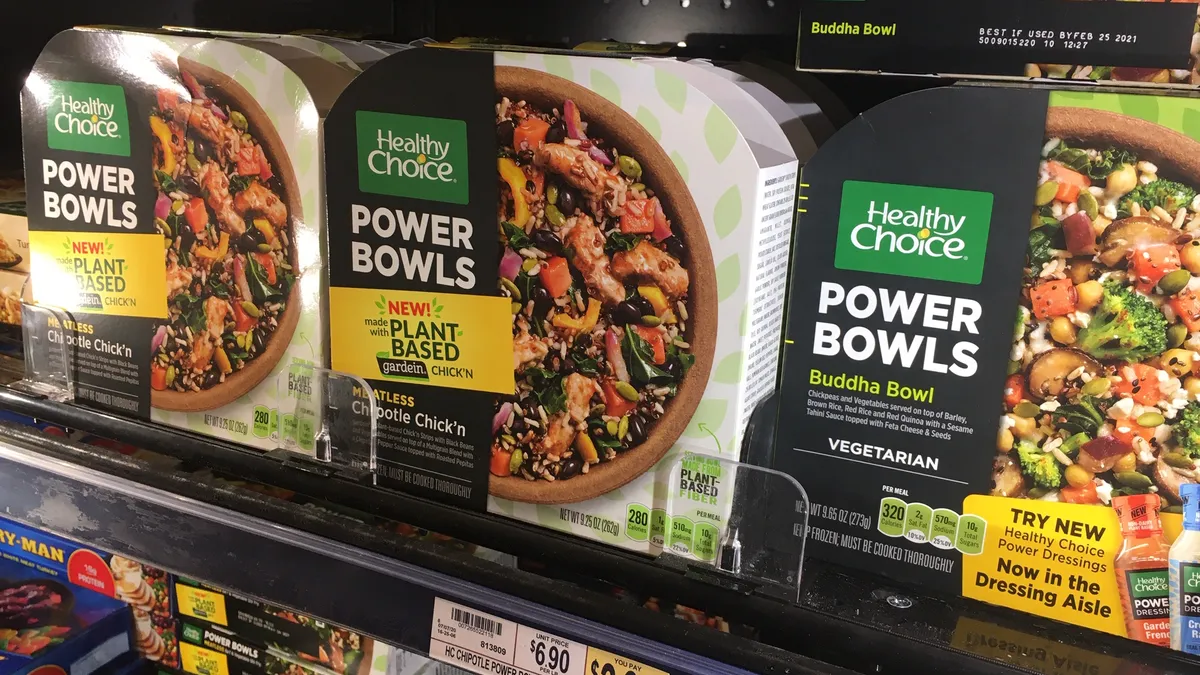Dive Brief:
- Conagra, the packaged foods company, made adjustments to its distribution network during its Q3 to keep up with demand and reduce out-of-stocks that resulted in $15 million in additional expenses, company executives said last week.
- The company decided to bypass the distribution network it normally relies on and instead shipped directly from the plant or a single distribution center to the customers, CFO David Marberger explained.
- "This meant aggressively seeking out every available truck and adjusting how we ship to customers," Marberger said of the supply chain investment.
Dive Insight:
Executives said the investments were necessary to keep inventory on shelves amid high demand. Conagra, the company that makes brands including Slim Jim and Pam, snapped into some sales growth in the most recent quarter with net sales up nearly 10% YoY in Q3 to reach more than $2.76 million, which "exceeded our expectations in the quarter," said President and CEO Sean Connolly. And its retail sales grew almost 14% YoY.
CPG sales generally have been doing well recently. In 2020, CPG sales rose 19%, according to figures from NCSolutions.
But sometimes keeping up with demand means making shifts to the supply chain to keep up. This was seen throughout the last year as companies like Coca-Cola and Mondelez cut SKUs from their offerings to shift production capacity to high-demand products.
While Conagra's method was different, its goal was the same: keeping products on the shelf in an attempt to avert missed sales.
"Investing to keep product on shelves to support this momentum and to support our retail customers while they manage tighter inventory levels was an easy business decision for us," Connolly said of the $15 million in expenses Conagra incurred in Q3.
Connolly said the company will work to rebuild its inventory over the next two quarters. The company's inventory assets declined 4% YoY, according to its financial filings.
The supply chain investment is meant to give the brand "better inventory and it allows us to meet customer demand more efficiently and it improves product availability," Marberger said.
"But it comes at an incremental cost, inefficient shipping lanes and sporadic frequency of distribution route," he said. "So there is a lot of dynamics there that’s going to continue into Q4 and we’ll manage that number the best we can."
Marberger noted that the company could rely on pricing power to help offset some of the higher expenses it incurred over Q3.
"History shows us that price adjustments are more likely to be accepted in the market when industry-wide and broad-based input cost inflation occurs and that’s the environment we see today," he said.
These price increases have started to show up at the consumer level, according to the most recent consumer price index data released Tuesday by the Bureau of Labor Statistics, which showed food up 3.5% YoY.














